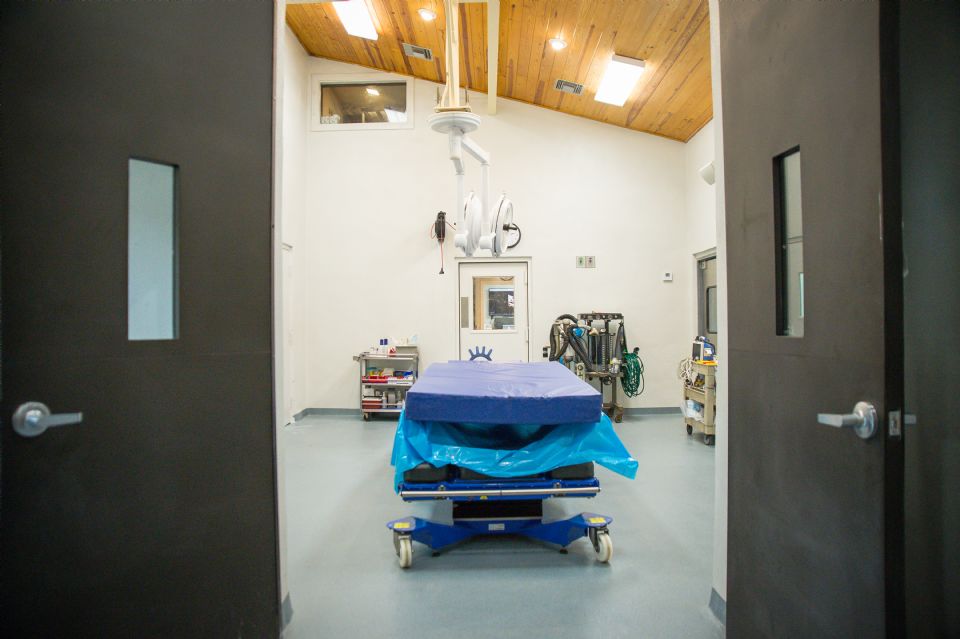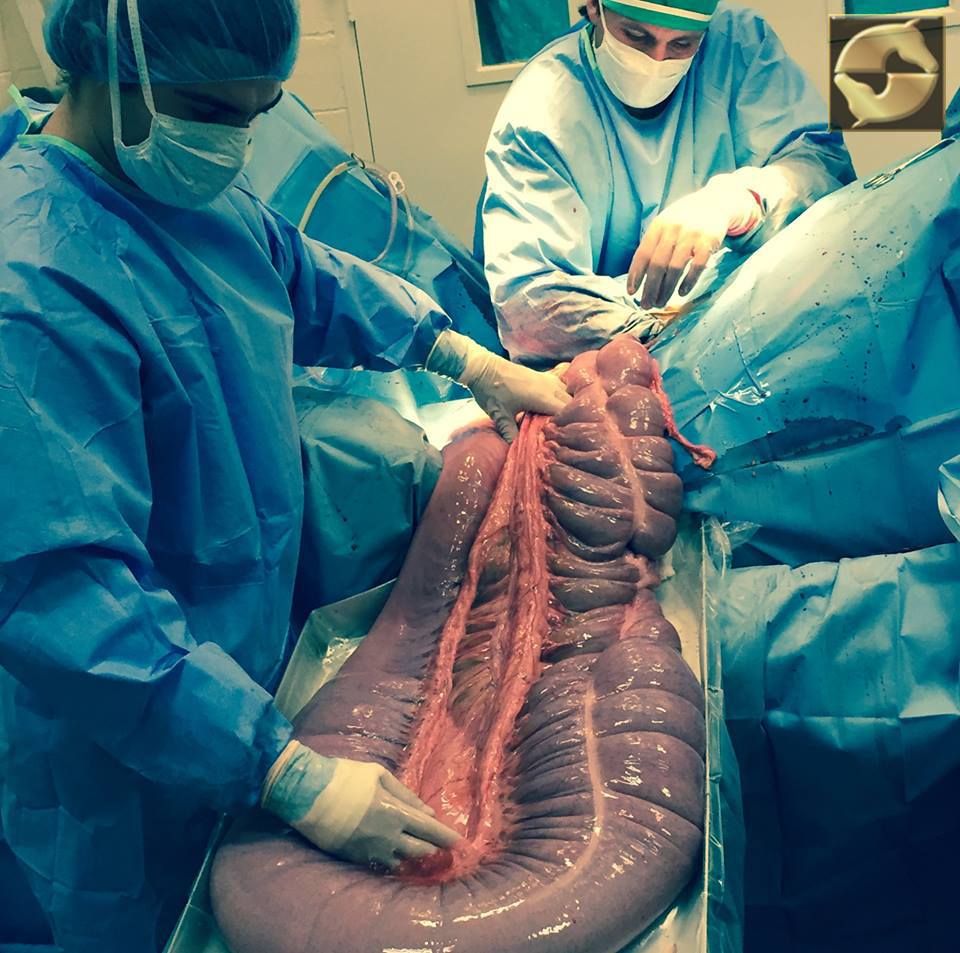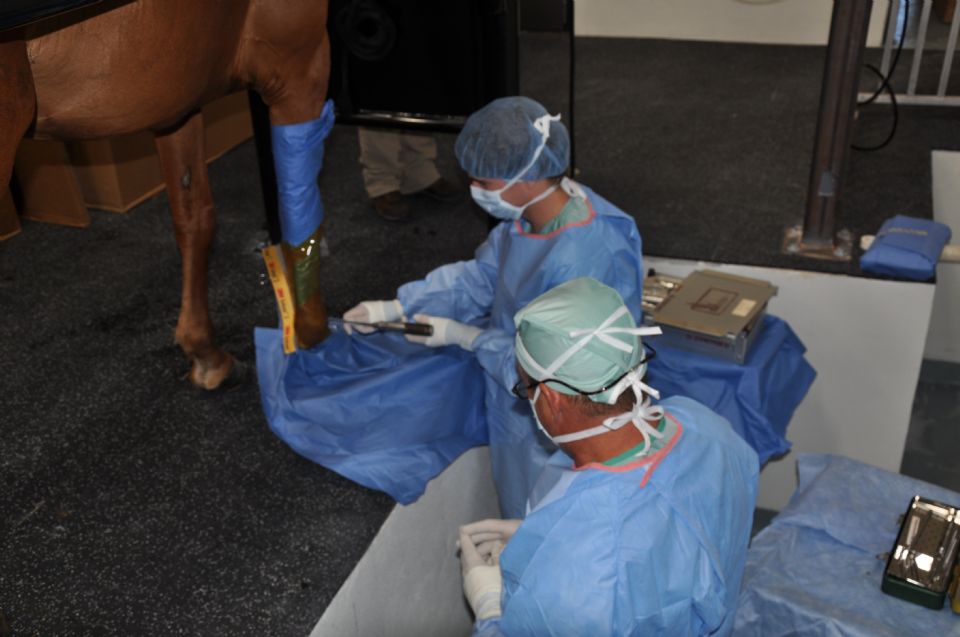The Future of Emergency Surgery at Palm Beach Equine Clinic
March 31, 2019 - Wellington, FL
Photo courtesy of Palm Beach Equine Clinic
Photo by Jump Media
Palm Beach Equine Clinic, based in Wellington, FL, is a worldwide leader in sport horse medicine, specializing in state-of the-art surgical procedures. With three board certified surgeons on staff, Palm Beach Equine Clinic offers some of the most advanced surgical capabilities in the world to its patients. Head of surgery Dr. Robert Brusie joins Dr. Weston Davis and Dr. Jorge Gomez to make up the team of Palm Beach Equine Clinic’s surgical veterinarians who are adept in many procedures that require high levels of expertise and advanced equipment.
“Between Drs. Gomez, Davis, and myself, we perform just about every soft tissue and orthopedic surgeries that are done in our field,” said Dr. Brusie. “Personally, my greatest sense of success is when I see a horse back after surgery going as good or better than it was prior to surgery.”
Whether it’s their own cases or the plethora of referral cases that come to Palm Beach Equine Clinic from other veterinarians, Brusie and his team of talented surgeons perform some of the most advanced emergency procedures seen in the study of equine veterinary care. Commonly, Palm Beach Equine Clinic has specialized in successful treatment of not only emergent colic cases, but also sport-related injuries such as condylar fractures.
Colic
One of the most dreaded words in horse care is “colic.” Fear of colic is in the back of any horse owner’s mind, but Palm Beach Equine Clinic’s emergency colic care offerings can help ease that fear with innovative surgical talent, technology, and dedication.
Characterized by abdominal pain or problems with the gastrointestinal tract, colic is something that often arises unexpectedly and from many different origins. Spoiled feed, abrupt changes in feed, parasite infestation, sand ingestion, lack of water consumption, and even excess stress or changes in the weather are among the numerous causes generally associated with colic.
Whatever the cause of a colic case may be, the most imperative tip for successful treatment is the immediate identification of symptoms and involvement of a veterinarian. Unfortunately, colic can be fatal, but early and appropriate treatment significantly improves outcomes and the chance of survival.
Common colic signs:
- Pawing
- Rolling
- Looking at abdomen
- Sweating
- Loss of interest in food and water
- Absence of gut sounds in any of the four abdominal quadrants
Palm Beach Equine Clinic’s colic care facilities include a full-service surgical center, intensive care hospital, three board-certified surgeons, primary care veterinarians, and skilled hospital technicians on call 24 hours a day, 365 days a year.
“In the last 10 years, colic surgery has come a long, remarkable way,” said Dr. Brusie. “With our clients, if the horse needs to go to surgery, we get an approximately 95% success rate. We attribute that to the clients’ excellent care of their horses, as well as their knowledge to contact us immediately. That being said, colic surgery is always the last resort. We try to help all horses improve medically first.”
The biggest challenge in the treatment of colic is determining surgical versus non-surgical cases.
“We do not want to put a non-surgical case through the risk of anesthesia and the months of healing time, so we try to spare that at all costs and determine the surgical cases as accurately as we can,” said Dr. Davis. “On the split side of that, we try to operate as quickly as possible on any horse that needs surgery.”
There are several methods for differentiating surgical cases. Beginning with a simple physical exam, the color of the gums, heart rate, gut sounds, and level of pain can all be indicative of surgical necessity. Additionally, a variety of tests may also include abdominal ultrasounds and rectal exams.
An abdominocentesis (or belly tap) is performed on every questionable colic case, in which fluid is collected from around the intestines and analyzed for color and character. A variety of other laboratory tests are also run on the fluid with the purpose of quickly determining if the horse’s bowel is compromised.
If surgery is indeed a necessary step, horses with long-standing and intermittent colic will undergo an abdominal exploratory procedure that may be done with laparoscopy. This option can be done while the horse is standing as a minimally invasive way to examine the full abdomen.
In most acute cases, further steps must be taken and the horse will go under general anesthesia so the surgeon can make as small an incision as they can to perform the needed surgical correction. Surgery approaches a strangulating or compromised lesion – one that most people understand as a twist – and corrects it. In more severe or long-standing cases, the surgery can require a resection and an anastomosis procedure to excise a compromised or devitalized segment of the intestine.
Condylar Fractures
Palm Beach Equine Clinic is changing the prognosis for condylar fracture injuries among sport horses. Imaging, surgical talent, and the facilities necessary to quickly diagnose, treat, repair, and rehabilitate horses with condylar fractures have recently improved immensely.
A condylar fracture is a repetitive strain injury that results in a fracture to the cannon bone above the fetlock due to large loads transmitted over the cannon bone during high-speed exercise. On a radiograph, a condylar fracture appears as a crack that goes laterally up the cannon from the fetlock joint and out the side of the bone, essentially breaking off a corner of the cannon bone, sometimes up to six inches long.
“A condylar fracture is a disease of speed,” said Dr. Brusie, who estimates that he repairs between 30 and 50 condylar fractures per year. “A fracture to the left lateral forelimb is most common in racehorses as they turn around the track on a weakened bone and with increased loading.”
Condylar fractures are further categorized into incomplete and non-displaced (the bone fragment hasn’t broken away from the cannon bone and is still in its original position), or complete and displaced (the fragment has moved away from the cannon bone itself and can often be visible under the skin).
The first step in effectively treating a condylar fracture through surgery is to accurately and quickly identify the problem. Palm Beach Equine Clinic veterinarians utilize the advanced imaging services at the clinic to accomplish exactly this.
Once the injury is identified as a condylar fracture, Palm Beach Equine Clinic surgeons step in to repair the fracture and start the horse on the road to recovery. Depending on the surgeon’s preference, condylar fracture repairs can be performed with the horse under general anesthesia, or while standing under local anesthesia. During both processes, surgical leg screws are used to reconnect the fractured condyle to the cannon bone.
“For a very simple and small non-displaced fracture, we would just put in one to two screws across the fracture,” explains Dr. Davis. “The technical term is to do it in ‘lag fashion,’ such that we tighten the screws down heavily and really compress the fracture line. A lot of times the fracture line is no longer visible in x-rays after it is surgically compressed. When you get that good compression, the fractures heal very quickly and nicely.”
More complicated fractures, or fractures that are fully displaced, may require more screws to align the parts of the bone. For the most severe cases of condylar fractures, a locking compression plate with screws is used to stabilize and repair the bone.
Making industry headlines with the installation of a ground-breaking surgery pit, Palm Beach Equine Clinic has made surgical procedures such as condylar fracture repairs more comfortable for veterinarians, owners, and, ultimately, the horses themselves. The four-and-a-half-foot recessed area allows surgeons to perform procedures on anything from the horse’s hock and below from a standing position. Since the horses are standing, they can forego general anesthesia in place of a mild sedative and local nerve blocks, which has drastically improved outcomes.
“Amazingly, horses tolerate it really well, and it is very convenient for us as surgeons,” said Dr. Gomez. “Condylar fractures can spiral all the way up through the cannon bone, and they have a tendency to develop complete catastrophic fractures. That risk can be significantly increased by the recovery from general anesthesia. Our goal is always to have the best result for the horse, trainers, and us as veterinarians.”
Most commonly seen in Thoroughbred racehorses and occasionally polo ponies, a condylar fracture was once considered a career-ending injury. Today, however, odds are in favor of a full recovery with horses regularly returning to competition in their respective disciplines.
“A condylar fracture was once considered the death of racehorses, and as time and science progressed, it was considered career-ending,” concluded Dr. Brusie. “Currently, veterinary medical sciences are so advanced that we have had great success with condylar fracture patients returning to full work. Luckily, with today’s advanced rehabilitation services, time, and help from mother nature, many horses can come back from an injury like this.”
Palm Beach Equine Clinic provides experience, knowledge, availability, and the very best care for its clients. To find out more, please visit www.equineclinic.com or call 561-793-1599.








